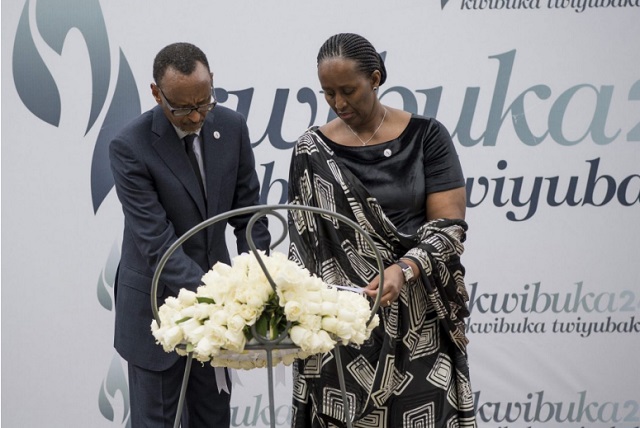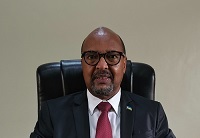
The 30th commemoration marks a generational cycle and is opportune for reflection on Rwanda’s transformation
COMMENT | JOSEPH RUTABANA | The Genocide against Tutsi in Rwanda took lives of more than a million Rwandans. The Genocide was organised and executed in full view of the International Community, which stood idle and watched as it unfolded.
The Genocide was not an accident, but rather a culmination of decades old divisive and ethnicity-based ideology of hatred. These divisions began during the colonial period in Rwanda and ultimately resulted in the planning of the Genocide against the Tutsi in 1994, carried out by the National Revolutionary Movement for Development (MRND) regime.
The Genocide was put to an end by the Rwandese Patriotic Front (RPF) in July 1994. Rwanda’s reconstruction journey started with the establishment of the Government of National Unity, which made unity and reconciliation the cornerstones of the new Rwanda.
Despite tremendous achievements in the three decades since the tragedy, Rwanda still faces Genocide denial.
Education about the Genocide is one of the most important ways to keep the memory of the victims alive. It is important to reflect on the root causes and consequences of the Genocide so that not only Rwandans, but the world at large, take the necessary measures to punish the crime of genocide and prevent it from happening again.
The commemoration period, which spreads to 100 days, is commonly referred to as Kwibuka (Kinyarwanda word for remembrance) and is an opportunity to pay tribute to the victims.
April 7 this year will mark the beginning of the 30th commemoration of the Genocide against the Tutsi and the theme is “Remember-Unite-Renew”. REMEMBER so that memory is kept for future generations; UNITY of Rwandans is paramount; resilience but not despair, by survivors of the Genocide and the whole nation have been a key factor for RENEWING lives.
The 30th Commemoration marks a generational cycle since the Genocide was put to an end, and is an opportune time for a call to reflect on the transformational journey that Rwanda has undergone for the last 30 years, building on the legacy of strength, resilience, and unity that the new generation is called upon to sustain and carry forward to adapt to today’s global challenges and future aspirations.
During 100 days of the Genocide, victims were thrown into rivers Nyabarongo and Akagera which are tributaries of Lake Victoria. Within weeks, the waters of those rivers had moved thousands of bodies into the Lake. These were unprecedented and terrifying scenes for the people living on the shores of Lake Victoria.
The Government and the people of Uganda showed humanity, empathy and solidarity by getting out of the lake all those bodies and by according them decent burial.
There are now three Memorial Sites along the lake: Ggolo, in Mpigi District with 4,771 bodies, Lambu in Masaka District with 3,337 and Kasensero in Rakai District with 2,875, making a total 10,983 victims of the Genocide against the Tutsi in Rwanda buried in Uganda. Every year, survivors and families of those who are believed to be buried in the above memorials, travel to Uganda to pay tribute to their loved ones. They have created an association called “Humura Victoria Warakoze”, loosely translated “Thank you Victoria, we are consoled”.
Reflecting on the response of the International Community in the last thirty years, worth mentioning is the establishment of the International Criminal Tribunal for Rwanda (ICTR) by the UNSC in November 1994 to try perpetrators of the Genocide; adoption of April 7th as the “International Day of Reflection on the 1994 Genocide against Tutsi in Rwanda” by the UNGA in April 2020; and the inclusion of four Memorials of the 1994 Genocide against the Tutsi on the World Heritage List by UNESCO World Heritage in September 2023. These include the Genocide Memorials in Kigali, Murambi, Bisesero and Nyamata.
The task ahead remains colossal and the International Community should take responsibility to make sure that all perpetrators of the Genocide against the Tutsi are punished wherever they are; and denial should not be tolerated.
The denial of the 1994 Genocide against the Tutsi is to assert that the Genocide did not occur. This denial rejects the researched and proven facts that Tutsi were the victims of genocide between April 7th, and July 15th, 1994. With contempt for factual evidence, the perpetrators have tried to alter the story, diminishing the death toll, claiming the killings were a self-defence, and blaming the victims instead.
The above is coupled by use of interpretative genocide denial, a mutational form of denial that occurs after factual proof from historical records and testimonies have been established and proven beyond doubt. It means that the massacres and killings are acknowledged as something other than genocide.
Throughout this 30th commemoration period, the world should stand in solidarity with Rwanda and ensure that “Never Again” slogan becomes a reality with tangible action to prevent history from repeating itself. The survivors of the Genocide against the Tutsi have tried to prevail over unparalleled upheavals and have showed unbelievable resilience! They deserve justice and respect.
*****

Joseph Rutabana is High Commissioner of Rwanda to Uganda
 The Independent Uganda: You get the Truth we Pay the Price
The Independent Uganda: You get the Truth we Pay the Price



